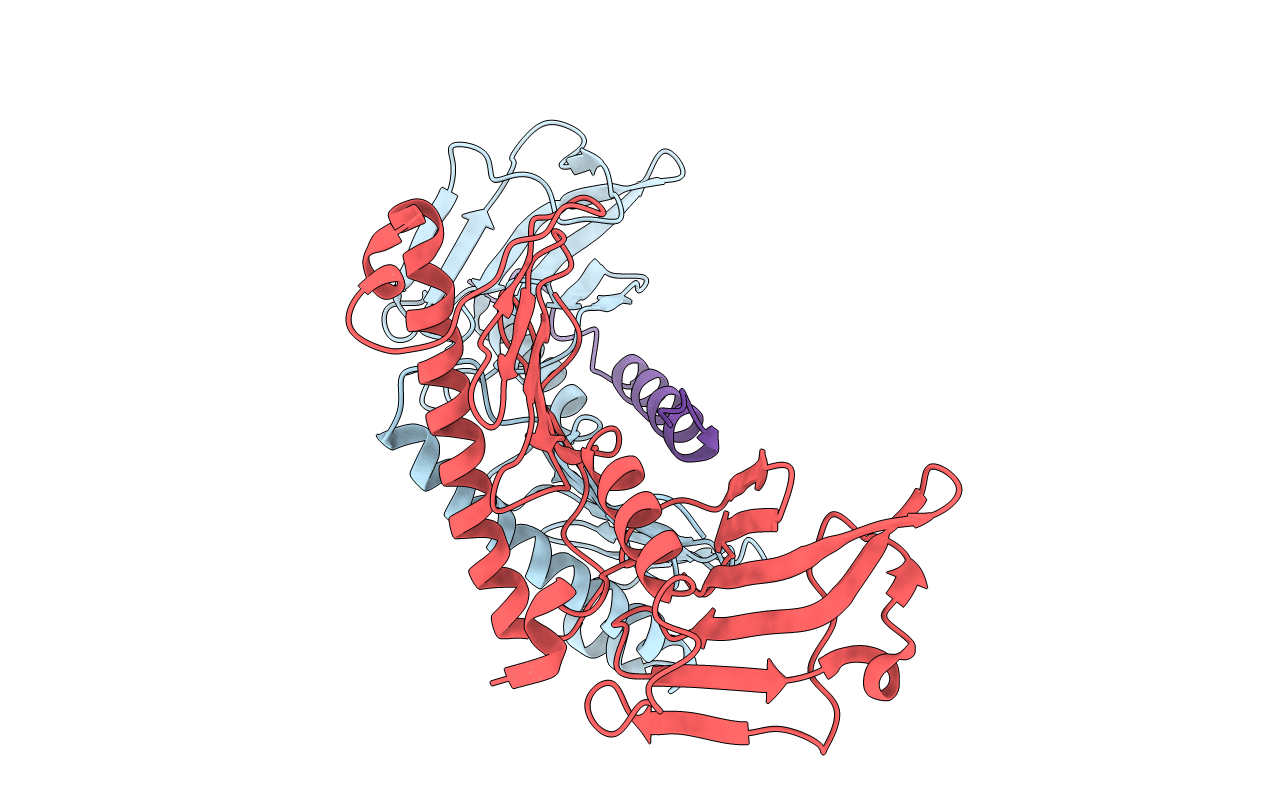
Deposition Date
2013-10-16
Release Date
2014-07-02
Last Version Date
2023-09-20
Entry Detail
PDB ID:
4N7V
Keywords:
Title:
Crystal structure of human Plk4 cryptic polo box (CPB) in complex with a Cep152 N-terminal fragment
Biological Source:
Source Organism:
Homo sapiens (Taxon ID: 9606)
Host Organism:
Method Details:
Experimental Method:
Resolution:
2.76 Å
R-Value Free:
0.28
R-Value Work:
0.25
R-Value Observed:
0.25
Space Group:
P 21 21 2


